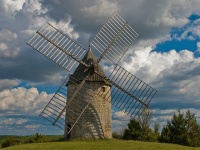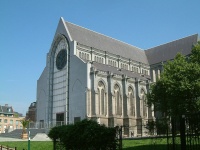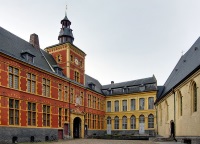Things to do in Lille
Palais des Beaux-Arts
Notice: Undefined property: stdClass::$description in /var/www/vhosts/tripreport.com/public_html/components/attraction-card.php on line 20

Musée des Moulins
Something different that appeals particularly to the mechanically minded is Lille's museum devoted to windmills. Situated on the highway to Roubaix, the Musée des Moulins boasts t…
Musée des Moulins
Something different that appeals particularly to the mechanically minded is Lille's museum devoted to windmills. Situated on the highway to Roubaix, the Musée des Moulins boasts two preserved pivoting windmills, which visitors can watch in operation grinding corn, as well as a museum detailing the history of windmill technology. Visitors can tour the full facility, or just one or two of the sites for reduced admission if pressed for time. It is quite a fascinating place.
One of the museum's aims is to preserve not only the windmills but also the industrial French heritage that they represent: the hard work, toil, endeavour and achievements of the people who made and operated them. They want to ensure that future generations can see and understand windmills, once such vital technology, and once such a common sight all over France. So far, they have restored about 45 windmills (and watermills) and are continuing with their labour of love.

Notre-Dame de la Treille Cathedral
A modern architectural attraction, Lille's cathedral (dedicated to the Virgin Mary) is an imposing structure, begun as a basilica in 1854 in 13th-century Gothic style. Building con…
Notre-Dame de la Treille Cathedral
A modern architectural attraction, Lille's cathedral (dedicated to the Virgin Mary) is an imposing structure, begun as a basilica in 1854 in 13th-century Gothic style. Building continued slowly, interrupted by wars and financial constraints, but finally in 1999 the lofty building was declared complete after the perfection of the unique main façade, designed by local architect Pierre-Louis Carlier in collaboration with Peter Rice, who engineered the Sydney Opera House.
The central marble section supported by steel wires is an impressive sight, particularly viewed from inside or at night, when it is revealed as resembling a pink translucent veil. From the outside it appears opaque but the marble is thin enough to let in a beautiful, gentle pink glow.
The church takes its name from the famous 12th-century statue of the Virgin Mary which was revered for centuries in Lille. This statue has a dramatic history and is associated with several miraculous events; it is a special part of Lille's heritage and cultural memory.

Hospice Comtesse Museum
In the heart of Lille's old town stands one of the few remaining Flanders buildings, founded as a hospital in 1237 by the Countess of Flanders, Jeanne de Constantinople. It remaine…
Hospice Comtesse Museum
In the heart of Lille's old town stands one of the few remaining Flanders buildings, founded as a hospital in 1237 by the Countess of Flanders, Jeanne de Constantinople. It remained in service as a hospital until 1939, and today has been turned into an art museum. Works are displayed in the old hospital ward and dormitories, with their barrel-vaulted ceilings, and other halls where the community of Augustine nuns once lived and worked, providing a haven for the sick.
Visitors can see the old kitchens, laundry, pharmacy, refectory and Prioresses' apartment, as well as the old chapel. The collections on display include paintings, tapestries, sculptures and porcelain from the region. The museum furnishings are mostly from the 17th century. Although some of the art in the collection is wonderful, the true fascination of the place is in imagining how life in the hospice used to be. Outside there is a delightful medicinal garden. There is a free guidebook and a great audio guide which is very informative and enriches the experience by providing history and context. The toilet is a little hard to find: it is located off the kitchen.



